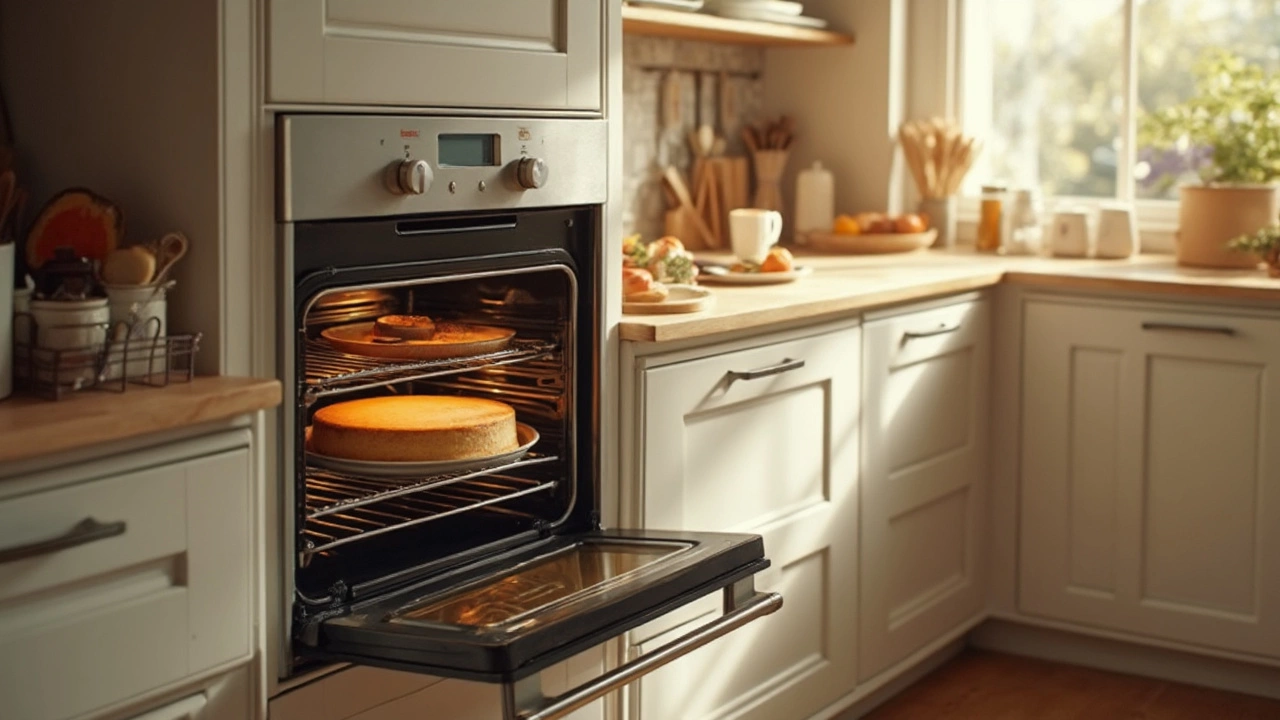
Cheesecake lovers, let’s get one thing straight—where you place your cheesecake in the oven actually matters. Sounds a bit crazy, but true! The oven rack isn’t just a platform—it can be the line between creamy perfection and a cracked nightmare.
Think about it. Ovens aren't just hot boxes. They’ve got this whole convection system going on. Heat rises, so the top will often give you faster browning, which might sound great. But for cheesecakes, the goal is a gentle, even cook. Most times, sticking with the middle or even slightly lower position helps ensure the heat surrounds your cheesecake evenly, preventing those dreaded cracks.
If you’re going for a specific look or if you have a funky old oven that likes to misbehave, maybe the middle’s not your best buddy. But no worries! Let’s dive deeper into this oven dance and help you find that sweet spot for your next bake.
- Rack Position: Does It Even Matter?
- Top Rack Temptations
- Going Low: The Bottom Rack Experience
- Finding the Sweet Spot: Middle Ground
- Turn on the Fan: Convection Differences
- Common Mistakes and How to Avoid Them
Rack Position: Does It Even Matter?
You might think, 'Hey, a rack’s a rack, right?' But nope, when it comes to baking a delectable cheesecake, where you pop it in the oven can make or break your dessert dreams. Why? Because heat distribution is no joke! The oven’s top, middle, and bottom racks offer totally different environments.
Place your cheesecake on the top rack, and it will face the fiercest heat waves rising up. Now, that's just speeding things up, risking over-browning or, worse, cracking that perfectly smooth top. On the flip side, the bottom rack might leave you with an unevenly baked cake, overcooked at the edges but still soft in the middle—a cheesecake nightmare!
So, what's a baker to do? In most cases, aiming for the middle rack is the sweet spot. Most ovens are calibrated to have the best circulation here, ensuring that your cake gets even heat without any fuss. But if you’re using a wonky old oven or just churning out a really finicky batch, sometimes adjusting slightly—say, a tad lower—can help manage how the heat hits your cheesecake.
And hey, let’s not forget! Some folks love experimenting with their convection ovens, which circulate air to even things out. Just remember, for cheesecakes, gentler is often better, so you might want to adjust temperature and time if you're letting the fan in on the action. It might take some trial and error, but when you hit the jackpot, every creamy bite will scream 'worth it!'
Top Rack Temptations
So, you're wondering why anyone might be tempted to bake on the top rack? Well, it’s all about that alluring golden color. The top rack often gives you that nice, browned top that some bakers desperately crave in a cheesecake baking adventure. But this comes with its own set of risks.
Using the top rack can cause uneven baking in a cheesecake. Why? Heat rises, and metal heats up faster, so your top layer can cook faster than the rest of the cake. This might leave you with a crisp top but a center that sinks or cracks. No one wants that!
Here’s a tip: if you want to go top-rack, adjust the oven temperature slightly lower. Lowering by 25°F (about 4°C) can help you avoid overcooking the top while ensuring the middle bakes just right. It’s a balancing act, but it can be done if you know your oven's quirks!
Also, consider covering the cake lightly with a piece of foil. It acts as a shield, stopping the direct blast from the top heater but still allowing the magical baking to continue underneath.
Think of it this way: if you’re in a rush to get that cheesecake out for a party and need a bit more color on top, maybe finish it off on the top rack for the last 5-10 minutes. But, in general, treat the top rack like a tool you use sparingly rather than your go-to spot.
Going Low: The Bottom Rack Experience
Okay, let's talk about using the bottom rack for your cheesecake. Some folks swear by it, and there’s a reason. When you position your cheesecake down low, it's less likely to get that over-browned top that happens when it gets too much direct heat from above.
So why might this matter? Cheesecakes need a gentle, even heat to help them cook slowly and develop that rich, smooth texture we all love. Using the bottom rack can give you just that, as it tends to shield your cake from high-intensity heat, letting it cook in a more controlled atmosphere. It's kind of like giving your cheesecake a nice, cozy spot in the oven rather than throwing it into a heat storm.
But don't just slide it in blindly and hope for the best. Here are some tips to nail that bottom rack strategy:
- Set your oven to the right temperature, typically around 160°C (320°F) for most cheesecakes. This lower temp helps prevent sudden temperature spikes.
- Use a water bath, also known as a bain-marie. This technique surrounds your cheesecake with water, helping to stabilize the temperature. Just place your springform pan into a larger baking dish filled with hot water. It’s like a little hot tub for your cake!
- Keep an eye on the cook time. Being on the bottom means it could take a bit longer, so patience is key. Start checking its doneness about 10 minutes before your recipe’s time is up.
In some situations, like when using an oven that tends to burn things on top even on lower shelves, the bottom rack can save your day. Just remember, every oven has its own quirks, so understanding yours is crucial. Get to know it, and your cheesecakes will thank you!
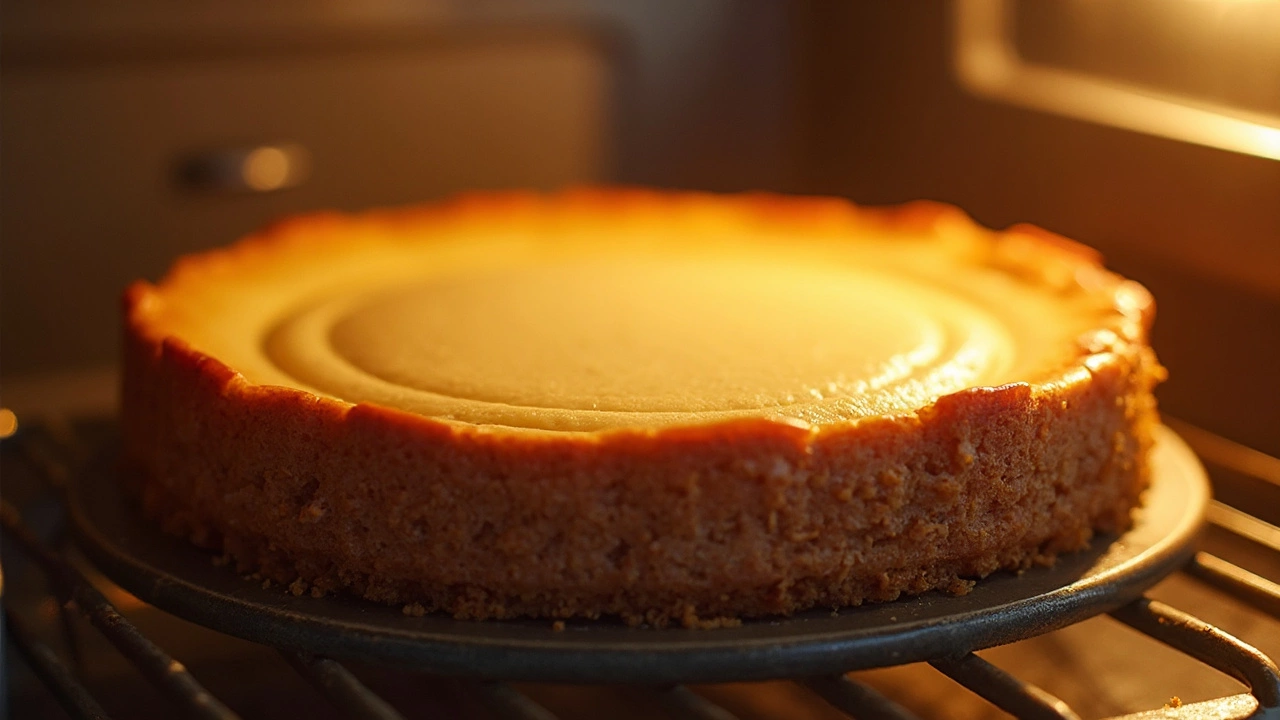
Finding the Sweet Spot: Middle Ground
When it comes to baking a crowd-pleasing cheesecake, the middle oven rack is often considered the Goldilocks zone—not too hot, not too cold, just right. This position typically exposes your bake to an even flow of heat, which is essential for getting that smooth, creamy texture everyone wants in a cheesecake.
So why is the middle rack such a great choice? Well, unlike the top rack that can cause the cake to brown too quickly, or the bottom that might leave you with a soggy base, the middle keeps things balanced. It allows for consistent air circulation surrounding the cake, which helps prevent those infamous cracks or a mushy center.
If you’re using a conventional oven, positioning your cake in the middle ensures that both the top and bottom heating elements contribute evenly. This way, your cheesecake cooks consistently from all sides. But if you’ve got a fan oven (lucky you!), the middle rack is still your go-to for an even bake. The fan helps circulate air all over, maximizing the middle’s benefits.
One small tip: Preheat your oven for at least 15 minutes before you pop in your cheesecake. This can make a huge difference in starting off with that even heat. If you're running a double batch, stagger them on the middle and lower rack, but swap halfway through for equal exposure. And remember, always use an oven thermometer; some ovens are cheeky liars!
Here's a quick guide to common oven types and their sweet spots for cheesecakes:
| Oven Type | Recommended Rack Position |
|---|---|
| Conventional Oven | Middle or Lower Middle |
| Convection Oven | Middle (fan ensures even heating) |
| Toaster Oven | Middle (watch closely for browning) |
Finding the right oven spot isn’t just about science; it's a little art, a touch of intuition, and a sprinkle of patience. Get your cheesecake on the middle rack, and you’ll likely find it’s the sweet spot you’ve been looking for all along!
Turn on the Fan: Convection Differences
Okay, let's talk about the convection oven, a game-changer for baking enthusiasts. Ever wonder why some folks are raving about it? Well, it’s all about the fan that’s spinning in there. This fan circulates hot air throughout the oven, helping goodies like your cheesecake bake more evenly. Sounds dreamy, right?
Now, if you're using a convection oven for that perfect cheesecake, there are a few things you might wanna keep in mind. First, the circulating air can make the oven feel a bit hotter than it actually is. That means you often need to lower the baking temperature by about 25 degrees Fahrenheit. So, if your recipe calls for 350°F in a regular oven, you’re looking at 325°F in a convection one.
Besides the temperature adjustment, cooking time might be shorter, which means keeping an eye on your cheesecake is a must. Overbaking could lead to dry edges, which nobody wants.
- Lower the temperature by 25°F for convection.
- Check the cheesecake earlier than the usual time.
- If things are browning too fast, cover the top with a piece of foil.
In terms of rack positions, convection ovens are often kind to cheesecake no matter where you place it because of the even heat distribution. Yet, many bakers still swear by starting in the middle rack to be safe.
Look, whether you're using a rustic old-school oven or one with all the bells and whistles, understanding these basics can save you a lot of heartache and ensure your cheesecake makes the perfect debut.
Common Mistakes and How to Avoid Them
Alright, let’s dive into some hiccups folks face when baking their beloved cheesecakes. Knowing where things can go wrong is half the battle, right? Here’s the scoop on what keeps cheesecake bakers up at night and how you can avoid these pitfalls.
First up, overcrowding the oven rack position. Putting another dish in alongside your cheesecake can affect baking time and temperature distribution. The rule of thumb? Give that cheesecake some space to breathe. Clutter isn’t just bad for garage storage; it’s bad for cheesecake too!
Another classic blunder is skipping the water bath. Trust me, this isn’t the step to skimp on. The water bath keeps the edges of your cheesecake from overcooking before the center gets its act together. Line your pan with foil, place it in a larger pan of water, and watch the magic unfold.
And, of course, there’s the temptation to peek. It’s pretty strong, but resist it! Opening the oven too often lets out heat and messes with the oven’s consistency. Your cheesecake baking needs that steady, loving heat.
Here's a quick checklist to keep you on track:
- Don't skip the water bath.
- Keep the oven door closed as much as possible.
- Use an oven thermometer to ensure accurate temperature.
- Never showcase another dish alongside your masterpiece. It needs space.
By steering clear of these traps, you’re well on your way to cheesecake success! Remember, the simplest changes can take your cake from good to glorious.


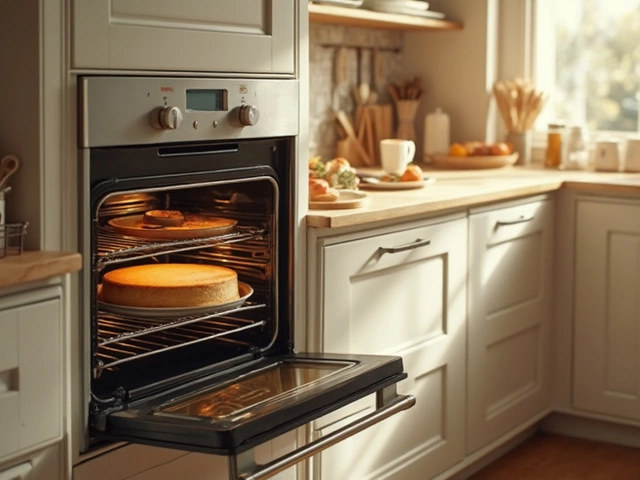

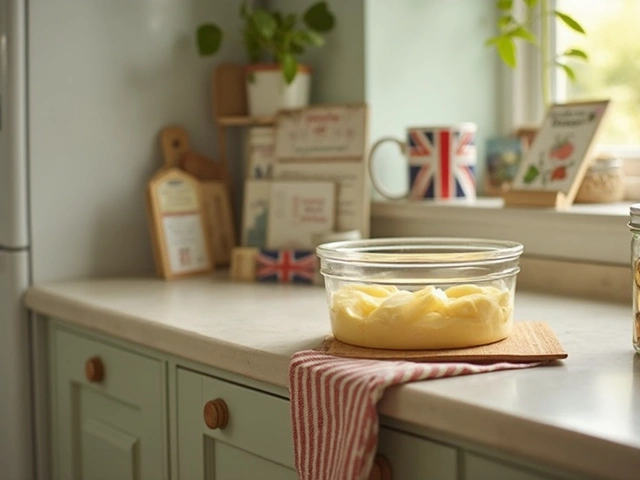

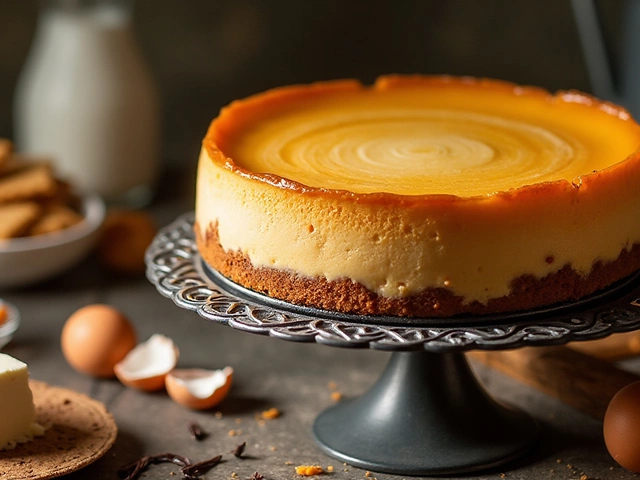
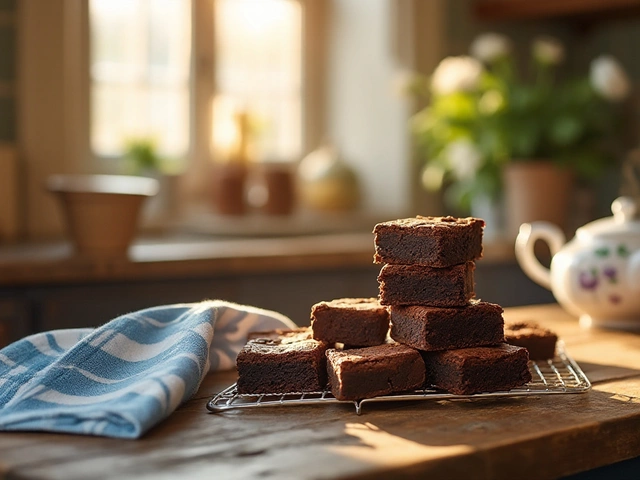
Write a comment